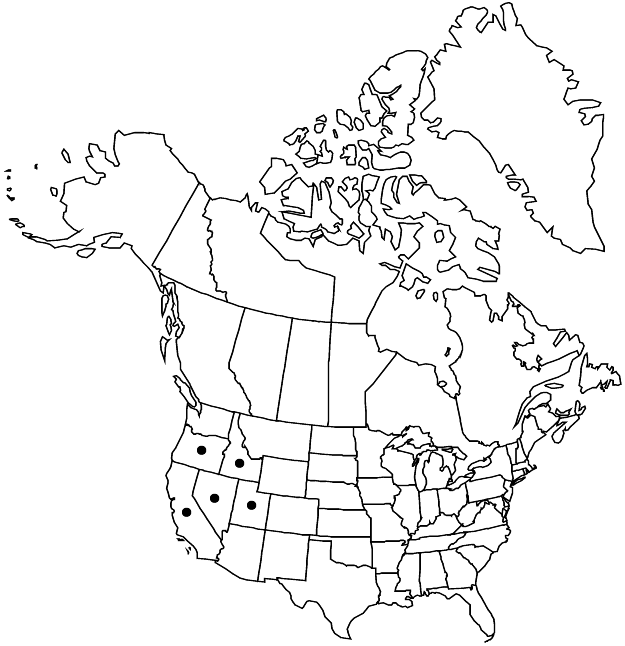Eremogone kingii
Novosti Syst. Vyssh. Rast. 10: 140. 1973.
Plants tufted or sometimes in compact cushion, green, not glaucous, woody or not at base. Stems erect, (1–) 3–20 (–25) cm, stipitate-glandular or glabrous proximally. Leaves: basal leaves abundant, persistent; cauline leaves in (1–) 4+ pairs, reduced distally or not; basal blades erect or closely ascending to somewhat spreading, green to gray-green, filiform to needlelike or narrowly subulate, 0.3–3 (–4) cm × 0.3–1.2 mm, flexuous or rigid, herbaceous, apex apiculate or stiff and spinose, glabrous to stipitate-glandular, not glaucous. Inflorescences (1–) 3–13-flowered, ± open cymes. Pedicels 2–15 mm, glabrous to densely stipitate-glandular. Flowers: sepals 1–3-veined, lateral-veins less developed, ovate or lanceolate, (2.5–) 2.8–5 (–6) mm, not expanding in fruit, margins broad, apex obtuse to broadly acute or acuminate, glabrous or stipitate-glandular on herbaceous portion; petals white or rarely pink, oblong to spatulate, (3–) 4–7 mm, ca. 1.2–1.3 times as long as sepals, apex entire, erose, or 2-fid almost to base; nectaries as abaxial, rounded lobe with transverse groove or elongate cup at base of filaments opposite sepals, 0.6 × 0.3 mm. Capsules 4.5–7 mm, glabrous. Seeds black to brown, spheric or oblong to ovoid, 1.2–2.1 mm, low-tuberculate, sometimes papillate on abaxial ridge.
Distribution

Calif., Idaho, Nev., Oreg., Utah
Discussion
Varieties 2 (2 in the flora).
M. F. Baad (1969) considered Eremogone kingii to be monophyletic despite considerable morphological variation; J. C. Hickman (1971) thought otherwise, considering E. kingii to be a “genetic dumping ground for all the closely related taxa,” but did not propose any new taxonomic alignment.
Eremogone kingii is extremely variable throughout its range with six infraspecific taxa recognized (under Arenaria kingii) by B. Maguire (1947, 1951). We have been unsuccessful in distinguishing more than two of those taxa. The others intergrade to such an extent that formal recognition is unwarranted. Most distinctive of these here-rejected taxa is var. uintahensis, said to have sepals (4.5–)5–6 mm, versus 3.6–4.5(–5) for the other taxa. Interestingly, the type specimen has sepals mostly 4.5 mm long. In the main portion of the range of var. uintahensis, the sepals are rounded to broadly obtuse, but they may also be acute. Furthermore, the sepals and pedicels are often glabrous, but the correlation of the above-mentioned characters varies over the range.
Selected References
None.
Key
| 1 | Petals white, apex 2-fid | Eremogone kingii var. kingii |
| 1 | Petals white or rarely pink, apex entire or erose | Eremogone kingii var. glabrescens |